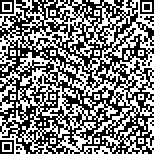| 本文已被:浏览 791次 下载 382次 |

码上扫一扫! |
| 遮阴和种植密度对冬小麦灌浆特性及籽粒品质的影响 |
|
张永强1,2, 方辉1, 陈传信1,2, 陈兴武1,2, 赛力汗·赛1,2, 薛丽华1,2, 雷钧杰1,2
|
|
|
| (1.新疆农业科学院粮食作物研究所, 乌鲁木齐 830091;2.农村农业部荒漠绿洲作物生理生态与耕作重点实验室, 乌鲁木齐 830091) |
|
| 摘要: |
| 为探明遮阴和种植密度对冬小麦籽粒灌浆特性及籽粒产量和品质的影响,在冬小麦拔节至成熟期遮阴50%(透光率为50%的遮阳网)和自然光2种光照条件下各设置5个种植密度:450(M1)、525(M2)、600(M3)、675(M4)和750万株/hm2(M5),测定不同处理冬小麦灌浆特性及籽粒品质指标。结果表明:遮阴较自然光条件明显降低籽粒灌浆速率,但最大灌浆速率(Vm)出现的时间(tm)有所提前,灌浆快增期持续的时间(Δt)缩短1.8~3.6 d;籽粒容重和出粉率的降幅分别为4.98%~6.69%和2.70%~6.39%;但籽粒蛋白质含量、湿面筋含量、降落值和沉降值明显高于对照各处理,各指标升高幅度依次为:1.60%~12.50%、2.65%~19.03%、2.58%~7.91%和0.16%~11.44%。遮阴下冬小麦面团形成时间、稳定时间、拉伸面积、延伸度、拉伸阻力及最大拉伸阻力均显著高于自然光照下,但面团吸水率、弱化度及拉伸比明显低于自然光照条件。遮光和自然光最高产量分别为M2处理5 250.26 kg/hm2和M3处理9 190.07 kg/hm2,与自然光相比,遮阴导致各密度平均产量降低45.43%,平均生物量降低28.45%,平均收获指数提高23.68%。综合考虑各项品质指标和籽粒产量,在50%遮阴条件下,密度为525万株/hm2可供新疆南疆地区核桃小麦间作生产参考。 |
| 关键词: 遮阴 密度 冬小麦 灌浆特性 品质 |
| DOI:10.11841/j.issn.1007-4333.2019.05.02 |
| 投稿时间:2018-05-04 |
| 基金项目:国家小麦产业技术体系乌鲁木齐综合试验站(CARS-3-49);新疆农业科学院青年基金项目(xjnkq-2016012);农村农业部荒漠绿洲作物生理生态与耕作重点实验室开放课题(25107020-201704) |
|
| Effects of shading and planting population on grain-filling properties and grain quality of winter wheat |
|
ZHANG Yongqiang1,2, FANG Hui1, CHEN Chuanxin1,2, CHEN Xingwu1,2, SAI Lihan·Sai1,2, XUE Lihua1,2, LEI Junjie1,2
|
| (1.Research Institute of Grain Crops, Xinjiang Academy of Agricultural Science, Urumqi 830091, China;2.Key Laboratory of Desert-Oasis Crop Physiology Ecology and Cultivation, Ministry of Agriculture and Rural Affairs, Urumqi 830091, China) |
| Abstract: |
| To study the variation of grain filling characteristics and grain quality of shading light,a field experiment including two light levels,nature light (no shading) and shading light (50% full radiation,produced by black sun-shade net of 50% light transmittance) from jointing to mature stage,and 5 planting densities of 4 500 (M1),5 250 (M2),6 000 (M3),6 750 (M4) and 7 500 thousand plants/hm2 (M5) were conducted to study the effects of grain filling characteristics and quality of winter wheat during jointing and maturity stage,which would provide theoretical basis for optimizing grain-crop intercropping in southern Xinjiang Vighur Autonomous Region.The results indicated that:compared with the nature light treatment,the grain filling rate was decreased significantly in the shading treatment,but the maximum grain filling time (tm) of the maximum filling rate (Vm) was earlier,the duration (Δt) of fast filling period was shortened by 1.8-3.6 d,grain test weight and milling yield reduction ranged from 4.98% to 6.69% and 2.70%-6.39%, respectively.The contents of grain protein,wet gluten,grain falling number and sedimentation volume of the shading treatment were significantly higher than those of the nature light,and the increasing range of those indexes was 1.60%-12.50%,2.65%-19.03%,2.58%-7.91%,0.16%-11.44%,respectively.The development time,stability time,extension area,extensibility,extension resistance and the maximum extension resistance of the shading were higher than those of nature light significantly,while the water absorption,degree of softening and draw ratio were lower than those of nature light significantly.The highest yield of shading and natural light were 5 250.26 kg/hm2 in M2 and 9 190.07 kg/hm2 in M3,respectively.Compared with the nature light treatment,the average yield and biomass of shading treatment in different planting population were decreased 45.43% and 28.45%,while harvest index increased 23.68%.Considering the quality indicators and grain yield comprehensively,under 50% shading condition,the planting population of 525×104 plants/hm2 could be a reference for field production in the walnut-wheat intercropping system of South Xinjiang. |
| Key words: shading planting density winter wheat grain-filling properties grain quality |